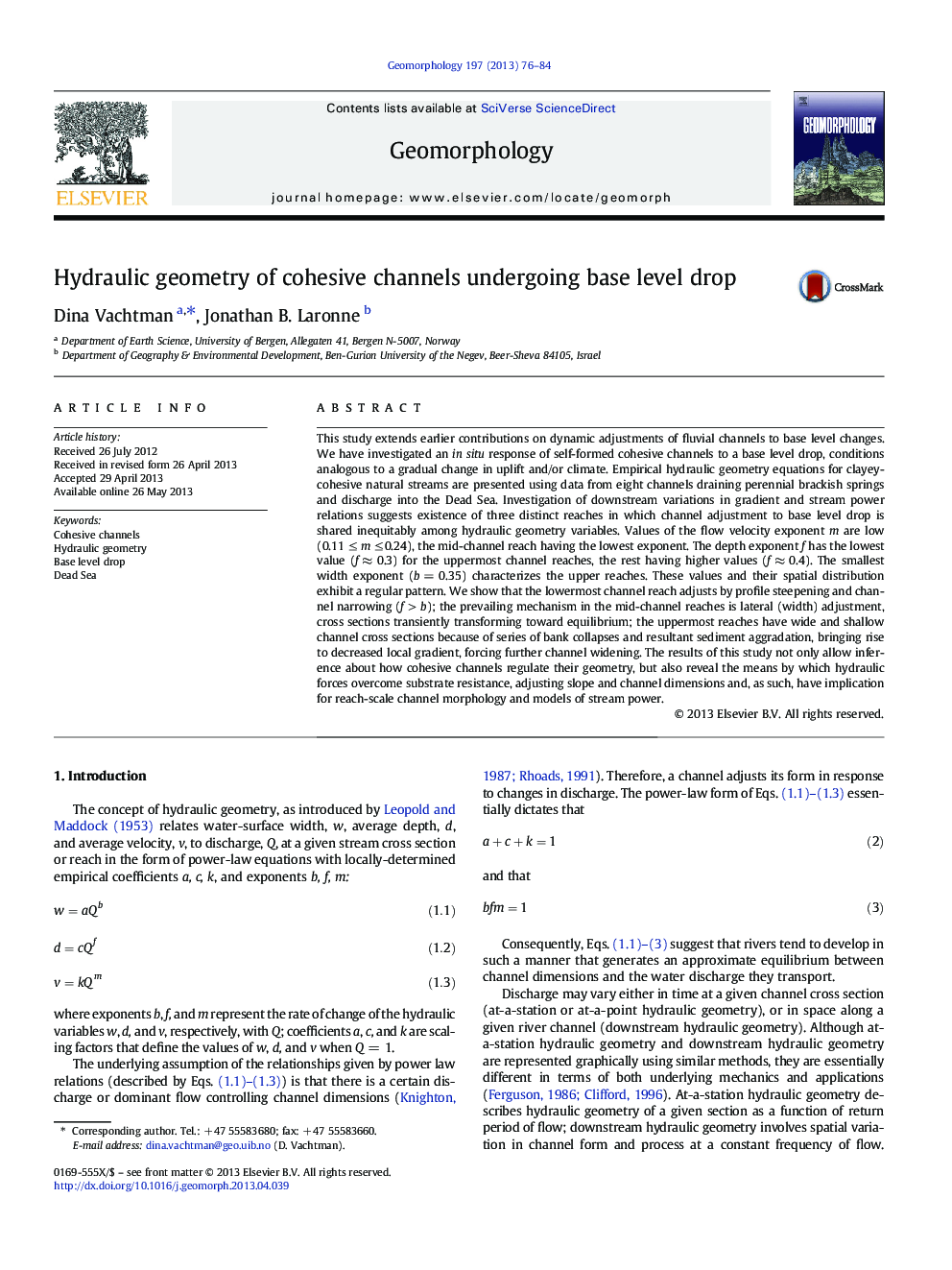| Article ID | Journal | Published Year | Pages | File Type |
|---|---|---|---|---|
| 4684765 | Geomorphology | 2013 | 9 Pages |
•We investigated adjustment of cohesive channels to base level drop.•We revealed continuous and systematic changes in channel parameters.•Cohesive channels have a width exponent consistent with findings for bedrock rivers.•The depth exponent are larger but within a range typical of alluvial rivers.
This study extends earlier contributions on dynamic adjustments of fluvial channels to base level changes. We have investigated an in situ response of self-formed cohesive channels to a base level drop, conditions analogous to a gradual change in uplift and/or climate. Empirical hydraulic geometry equations for clayey-cohesive natural streams are presented using data from eight channels draining perennial brackish springs and discharge into the Dead Sea. Investigation of downstream variations in gradient and stream power relations suggests existence of three distinct reaches in which channel adjustment to base level drop is shared inequitably among hydraulic geometry variables. Values of the flow velocity exponent m are low (0.11 ≤ m ≤ 0.24), the mid-channel reach having the lowest exponent. The depth exponent f has the lowest value (f ≈ 0.3) for the uppermost channel reaches, the rest having higher values (f ≈ 0.4). The smallest width exponent (b = 0.35) characterizes the upper reaches. These values and their spatial distribution exhibit a regular pattern. We show that the lowermost channel reach adjusts by profile steepening and channel narrowing (f > b); the prevailing mechanism in the mid-channel reaches is lateral (width) adjustment, cross sections transiently transforming toward equilibrium; the uppermost reaches have wide and shallow channel cross sections because of series of bank collapses and resultant sediment aggradation, bringing rise to decreased local gradient, forcing further channel widening. The results of this study not only allow inference about how cohesive channels regulate their geometry, but also reveal the means by which hydraulic forces overcome substrate resistance, adjusting slope and channel dimensions and, as such, have implication for reach-scale channel morphology and models of stream power.
